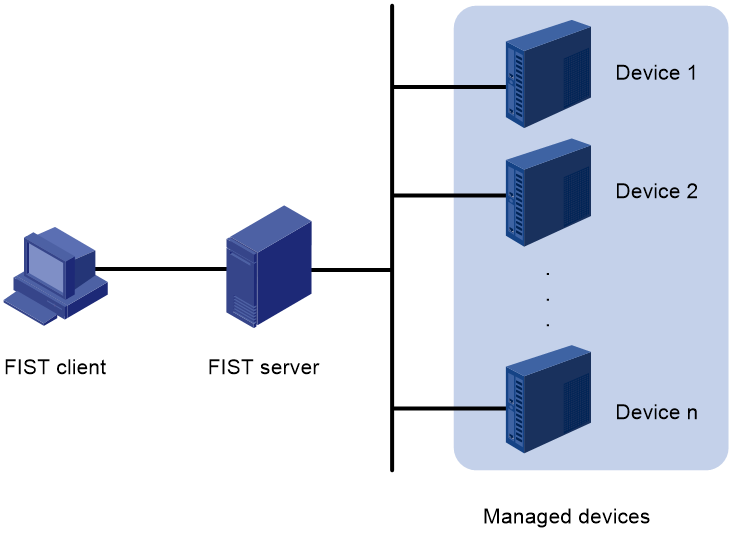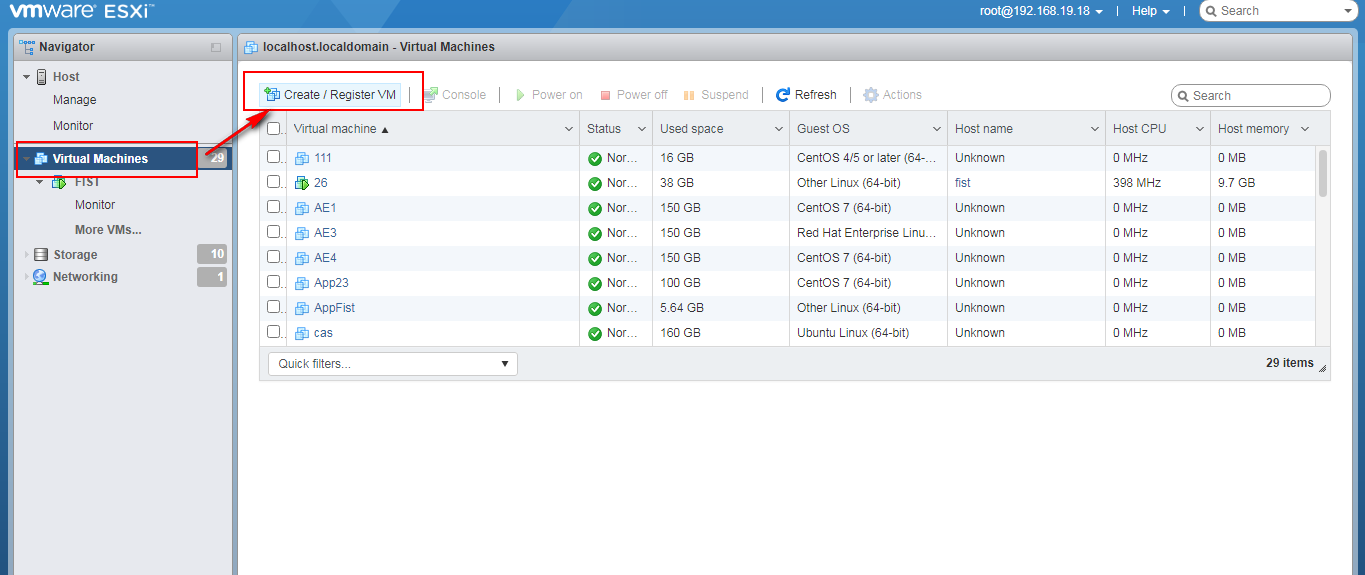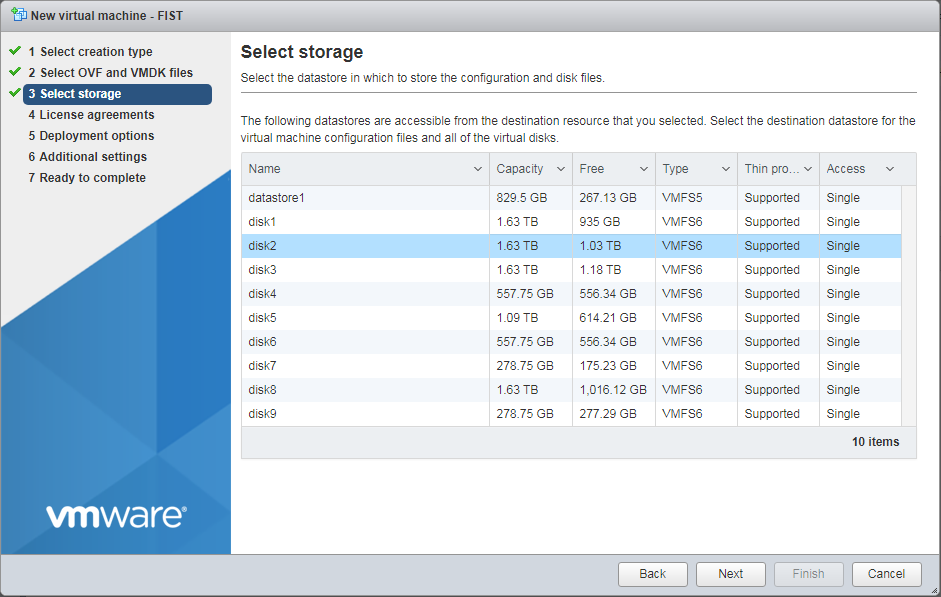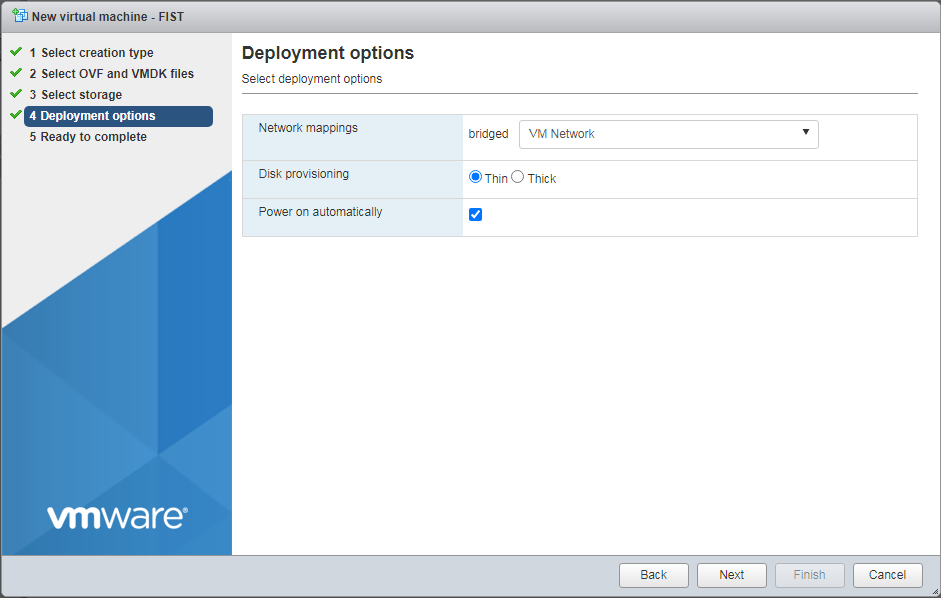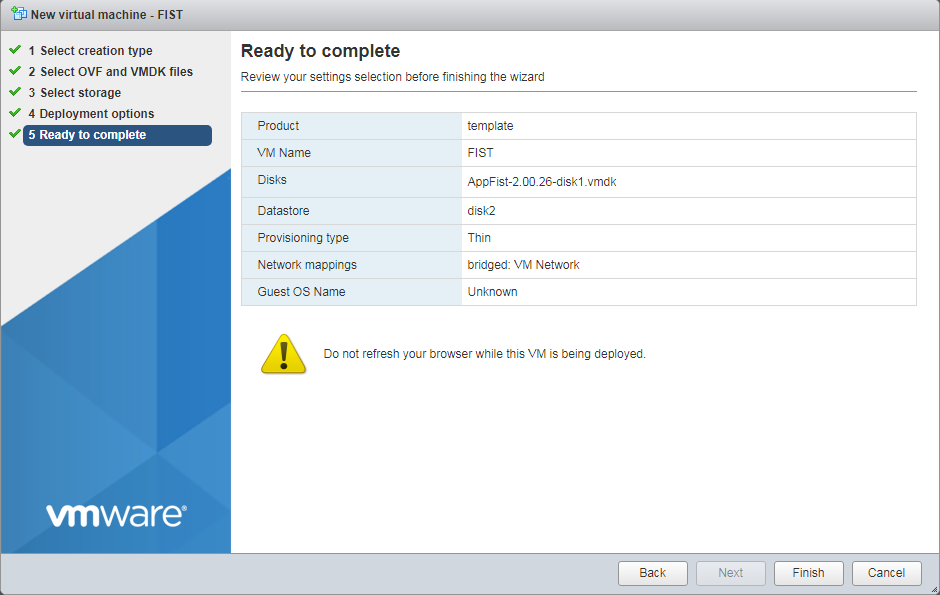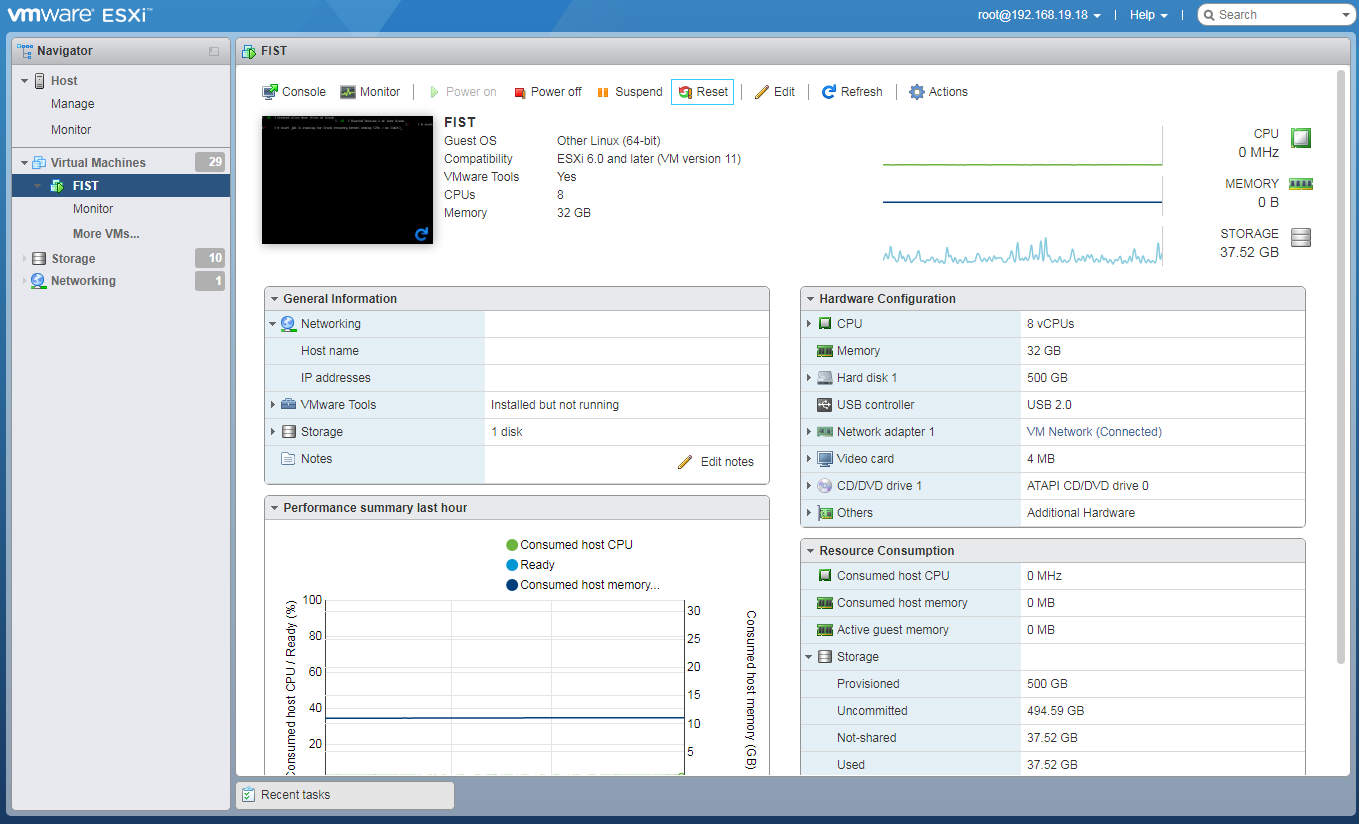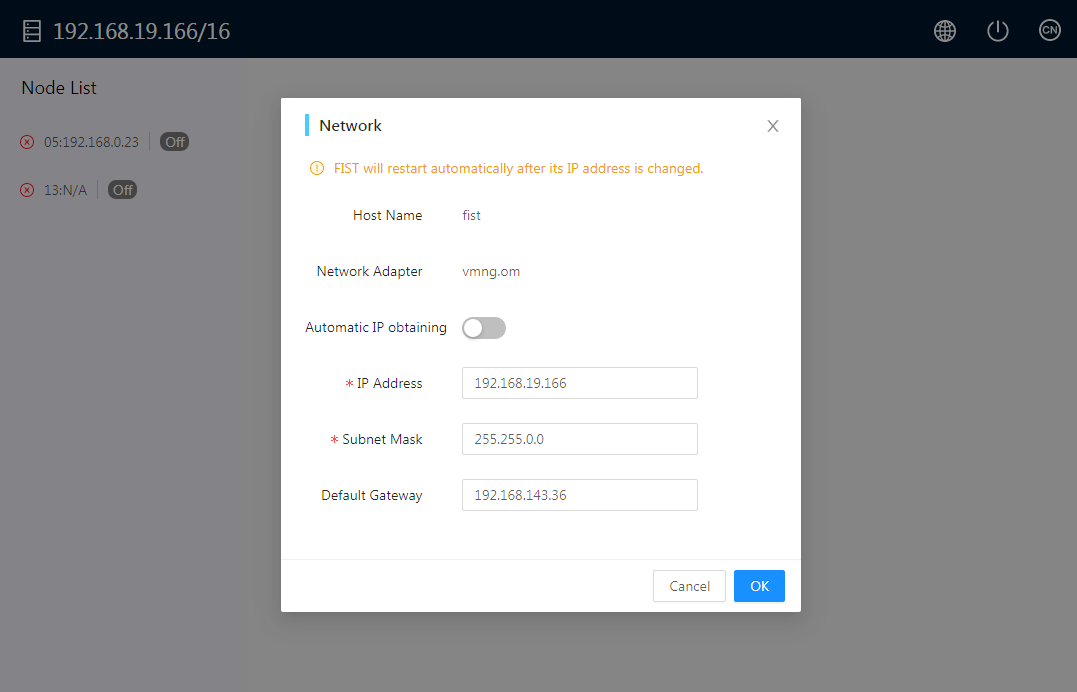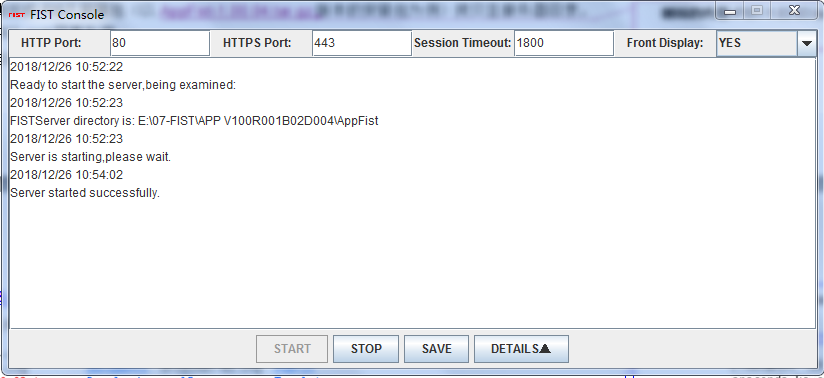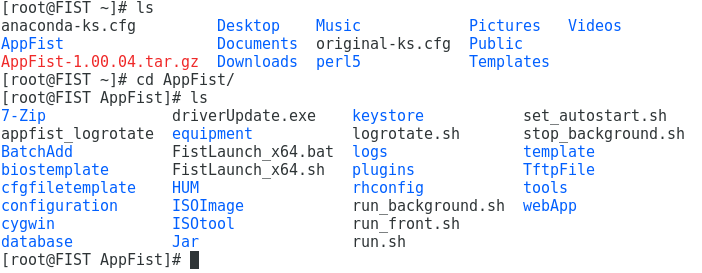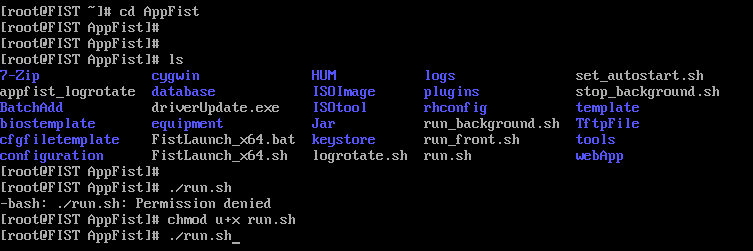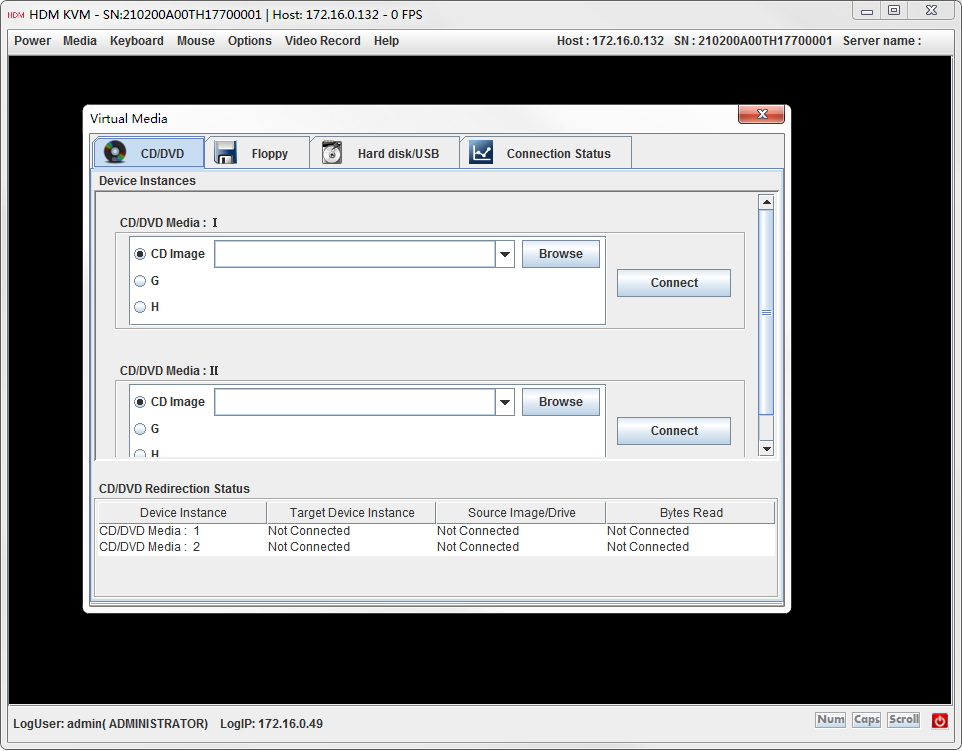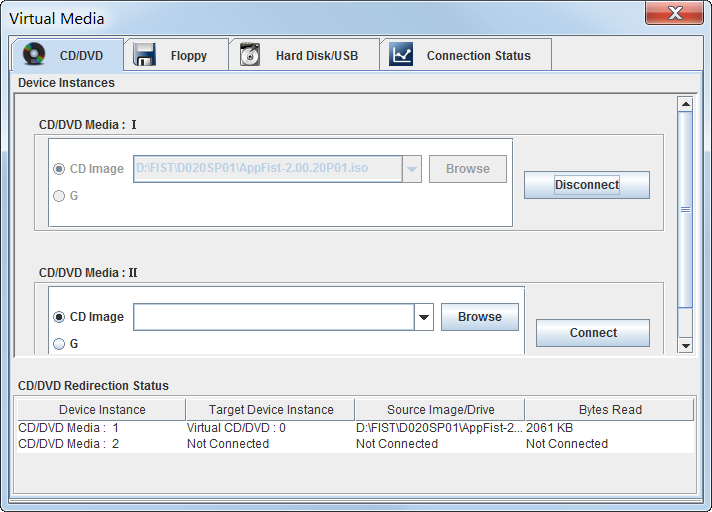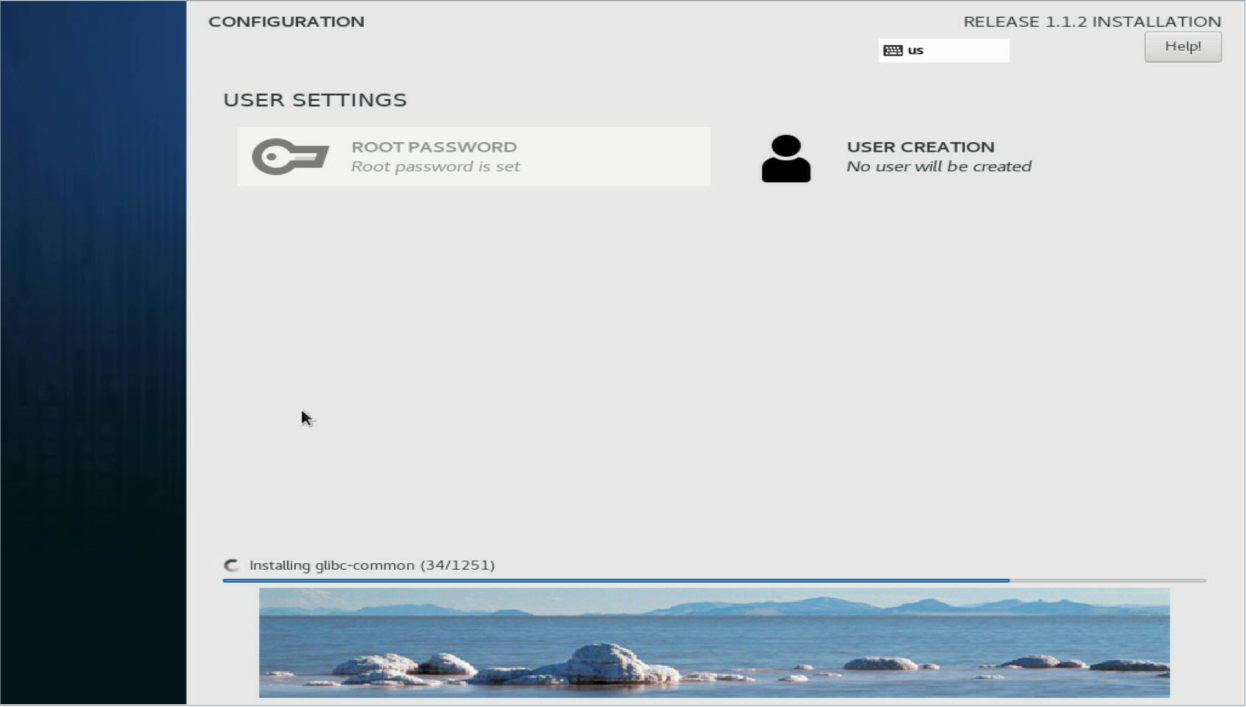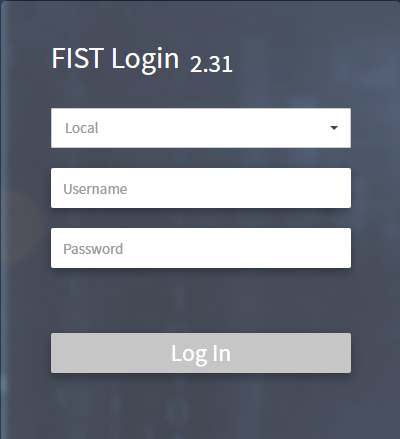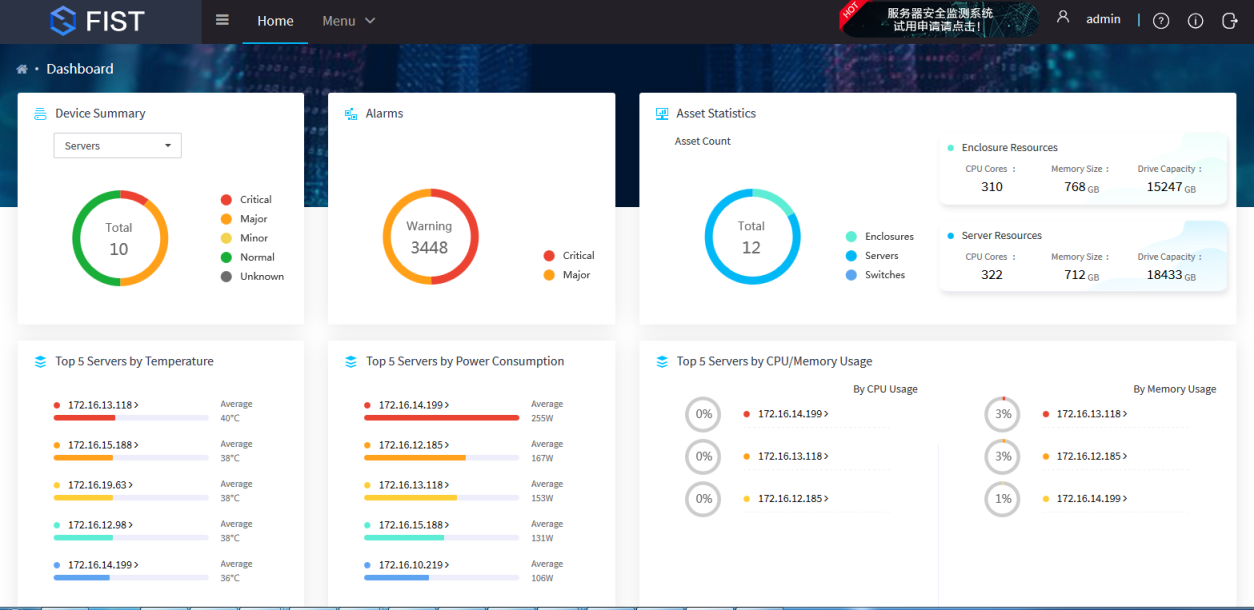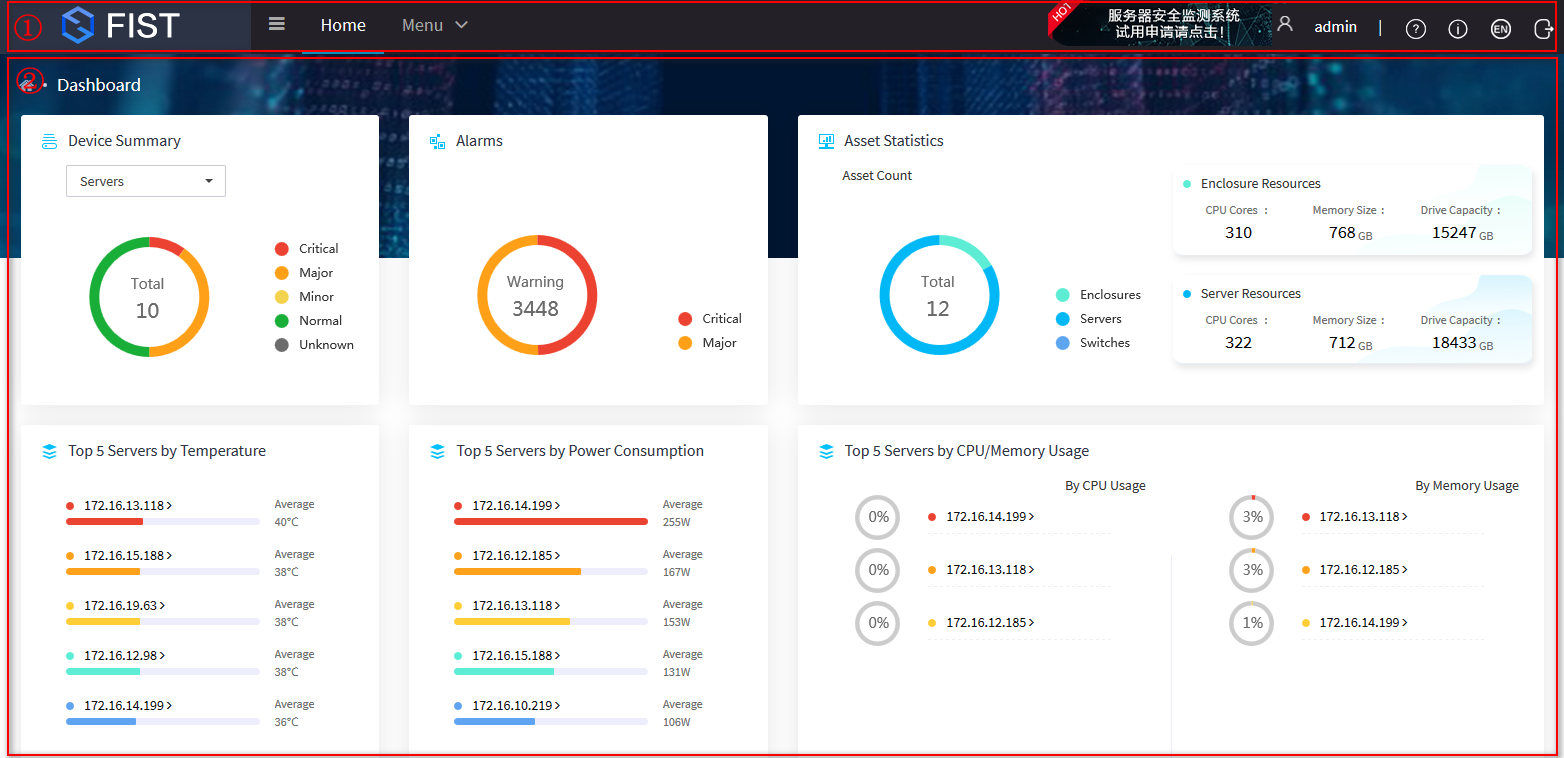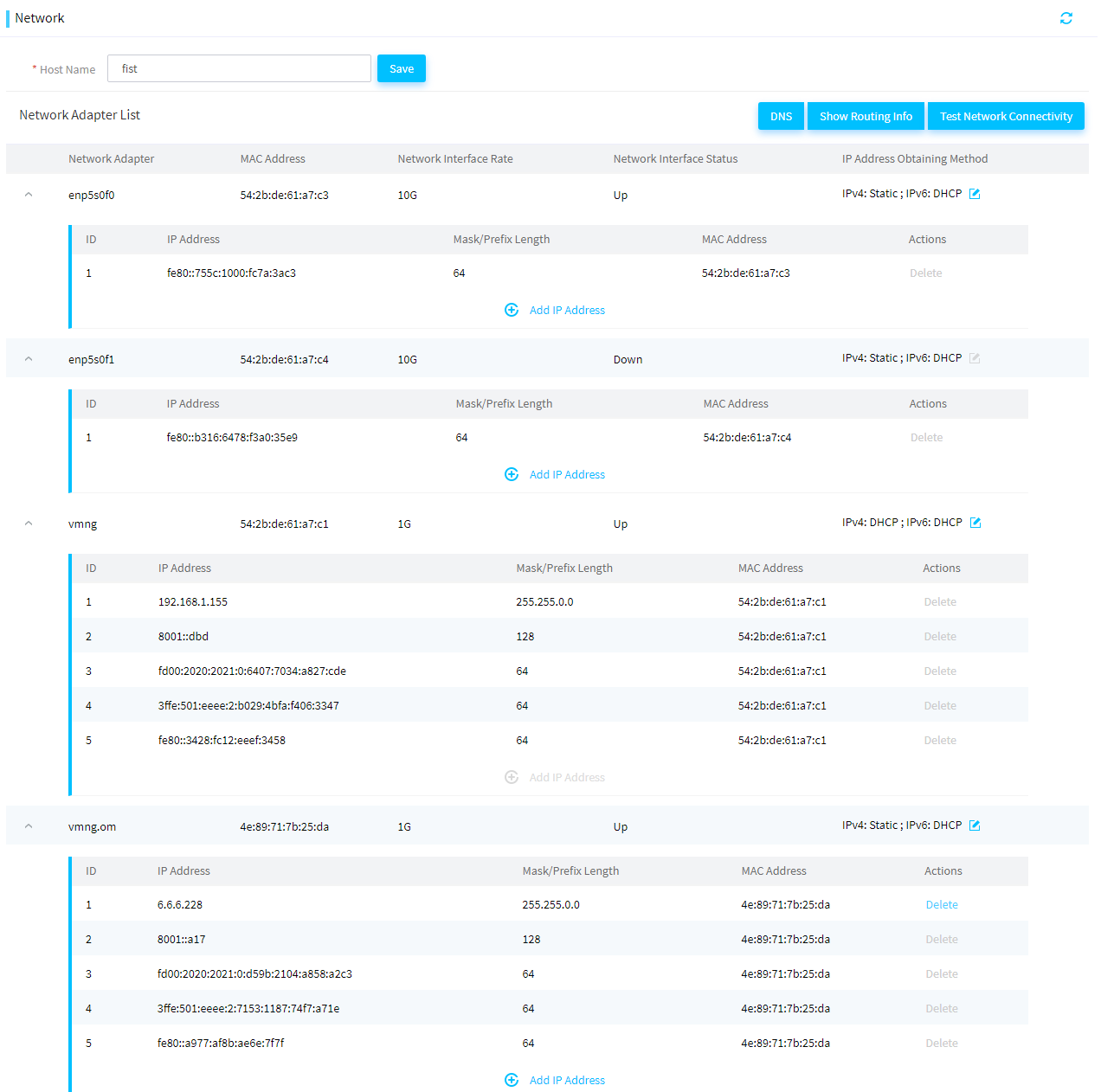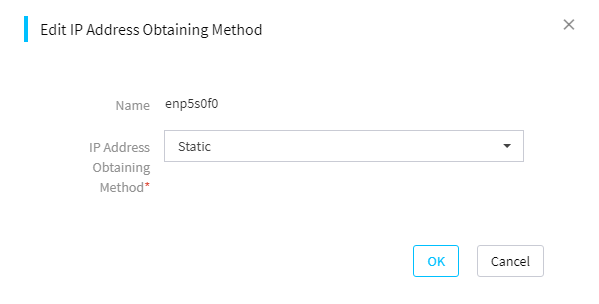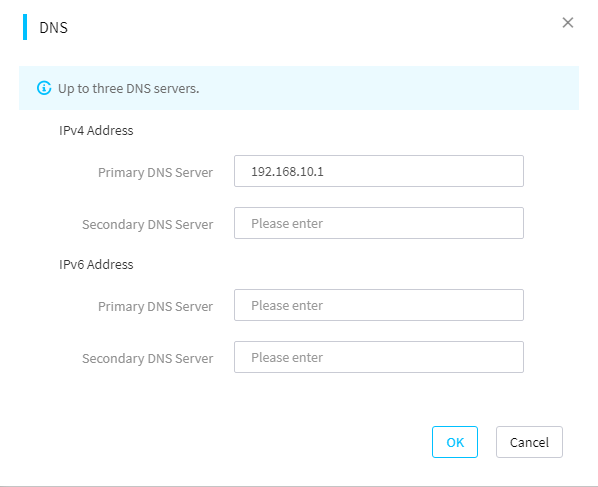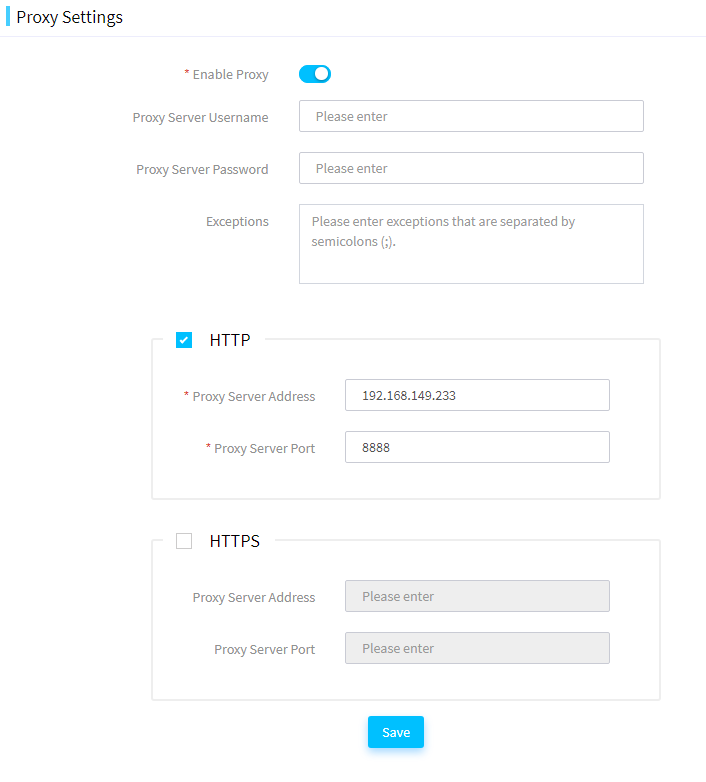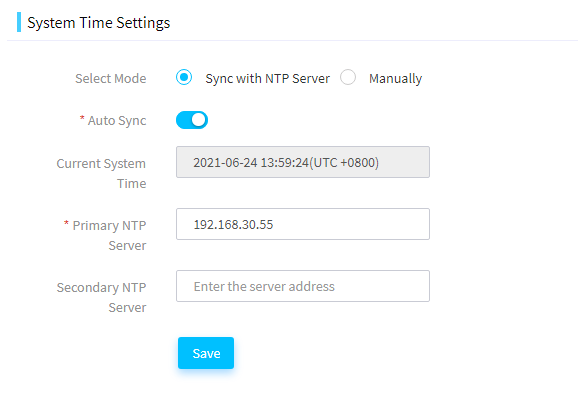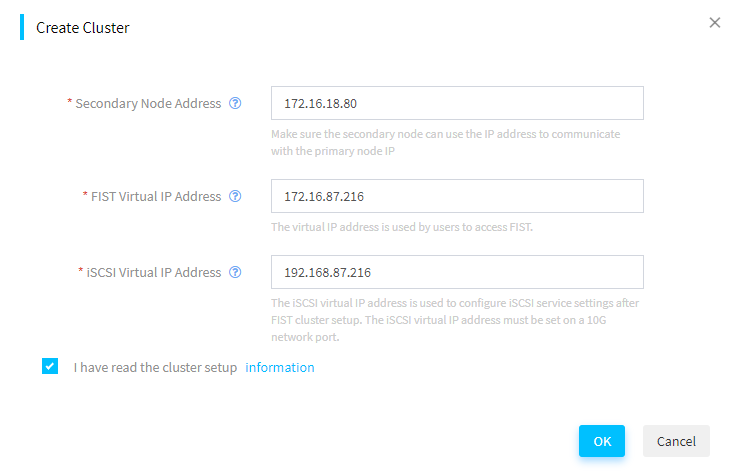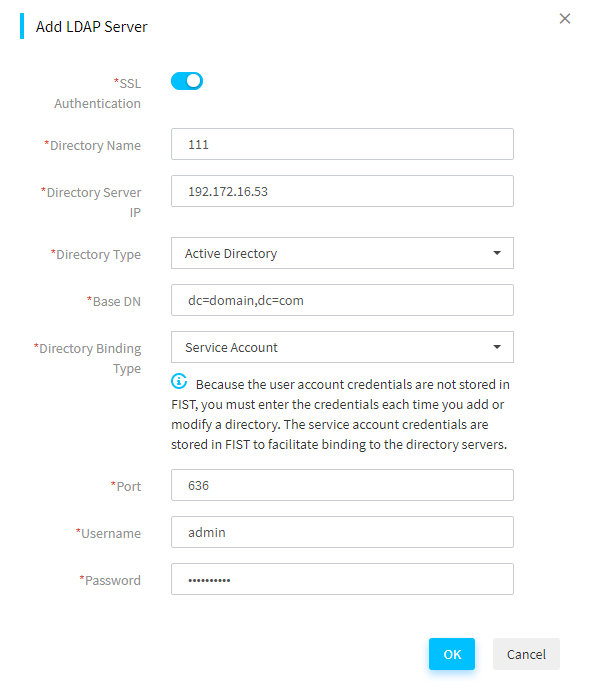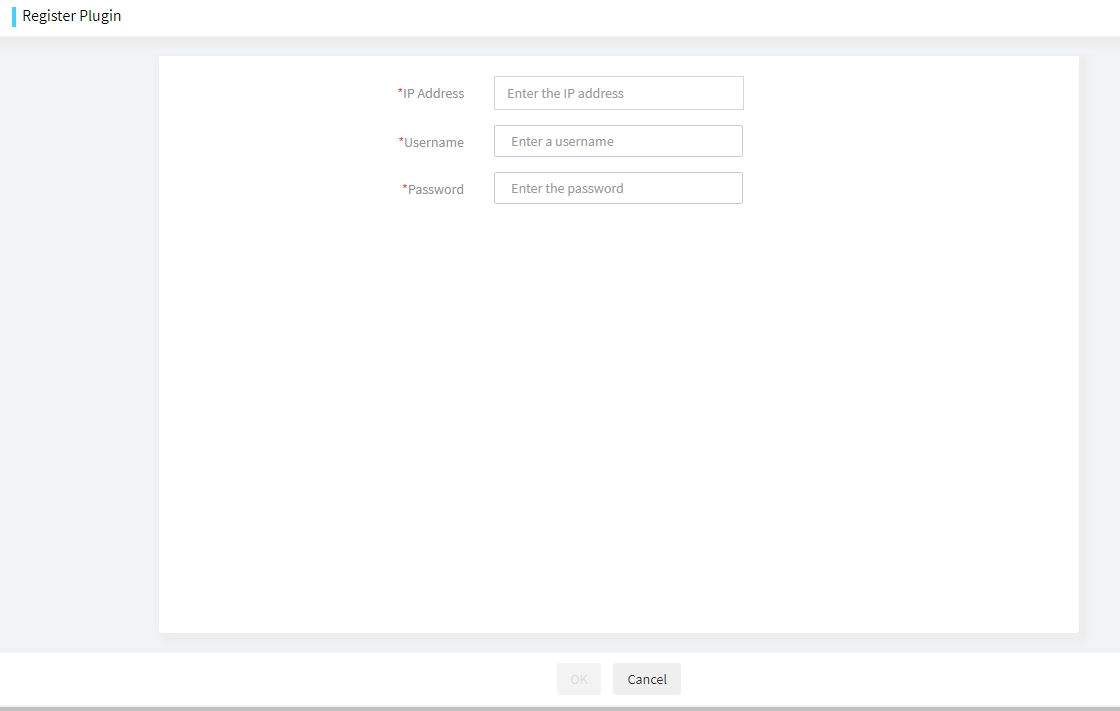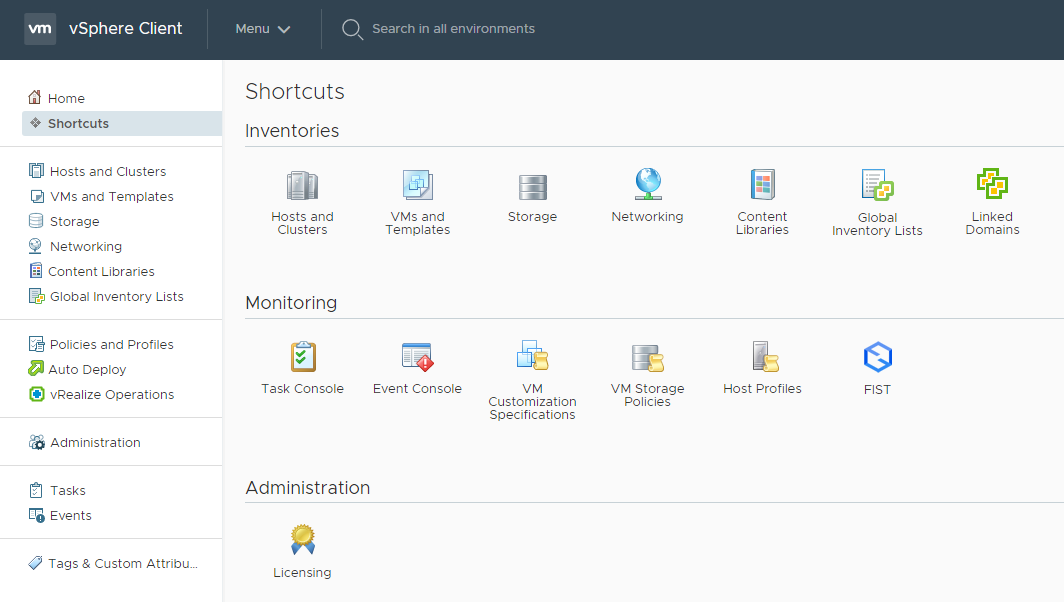- Table of Contents
- Related Documents
-
| Title | Size | Download |
|---|---|---|
| 01-Text | 1.92 MB |
Contents
Obtaining the FIST installation package
Installing FIST on a VMware ESXi system by using a .ova file
Installing FIST on a Windows system by using a .tar installation package
Installing FIST on a Linux system by using a .tar installation package
Installing and starting FIST on a GUI Linux system
Installing and starting FIST on a non-GUI Linux operating system
Installing and starting FIST by using an ISO image
Configuring the network settings
Setting the host name for FIST
Setting the IP address obtaining method for a network port
Synchronizing the system time with an NTP server
Incorporating FIST to vCenter Server as a FIST plugin
Uninstalling FIST installed by using a .tar installation package
Uninstalling FIST from a Windows operating system
Uninstalling FIST from a GUI Linux operating system
Uninstalling FIST on a non-GUI Linux operating system
About FIST
As an intelligent, scalable server management software, Fast Intelligent Scalable Toolkit (FIST) provides comprehensive server management capabilities for customers to manage servers quickly, flexibly, and intelligently. FIST also allows customers to develop and incorporate their own management tools into the FIST system to extend its functionality.
This document is applicable to the following products:
· AE modules
· H3C UniServer B16000
· H3C UniServer B5700 G5
· H3C UniServer R4300 G5
· H3C UniServer R4330 G5
· H3C UniServer R4700 G5
· H3C UniServer R4900 G5
· H3C UniServer R4950 G5
· H3C UniServer R5300 G5
· H3C UniServer R5500 G5
· H3C UniServer R6900 G5
· H3C UniServer B5700 G3
· H3C UniServer B5800 G3
· H3C UniServer B7800 G3
· H3C UniServer E3200 G3
· H3C UniServer R2700 G3
· H3C UniServer R2900 G3
· H3C UniServer R4300 G3
· H3C UniServer R4700 G3
· H3C UniServer R4900 G3
· H3C UniServer R4950 G3
· H3C UniServer R5300 G3
· H3C UniServer R6700 G3
· H3C UniServer R6900 G3
· H3C UniServer R8900 G3
|
|
NOTE: · The FIST screenshots used in this document are for illustration only and might differ from your products. · The information in this document might differ from your product if it contains custom configuration options or features. |
Architecture
As shown in Figure 1, the FIST architecture contains the following elements:
· FIST client—A PC or physical server used to access FIST through the Web browser.
· FIST server—A PC, physical server, or AE module hosting the FIST software. An AE module ships with FIST pre-installed.
· Managed devices—Devices managed by FIST, including enclosures, switches, and servers.
You can access FIST from the browser of the FIST client or FIST server and manage devices through FIST. The FIST client and FIST server can be the same device, unless the FIST server runs on an AE module.
FIST supports a maximum of 10 users with the default user included.
To upgrade the server drives or view more information about managed devices on FIST, you need to install and start FIST System Management Service (SMS) on the managed devices. For more information about FIST SMS, see the user guide for FIST SMS.
Preparing for installation
FIST server requirements
Hardware requirements
Table 1 shows the recommended hardware requirements for installing FIST on a physical server by using a .tar package.
|
Item |
Requirements |
|
CPU |
X86, 4 cores or more |
|
Memory size |
8 GB and above |
|
Available disk space |
100 GB and above |
|
NIC |
1 or more |
|
|
NOTE: You need to upgrade the hardware configuration with the increase of the managed devices. |
Table 2 shows the minimum hardware requirements for installing FIST on a VM.
Table 2 Minimum hardware requirements
|
Item |
Requirements |
|
CPU |
8 cores |
|
Memory size |
32 GB |
|
Available disk space |
500 GB |
|
NIC |
1 |
Software requirements
Table 3 shows the software requirements for the FIST server.
|
Item |
Requirements |
Remarks |
|
|
Operating system |
Linux |
CentOS 7.5 (64-bit) |
Only 64-bit operating systems are supported. |
|
Windows |
Microsoft Windows 7 (64-bit) |
||
|
Microsoft Windows 10 (64-bit) |
|||
|
Microsoft Windows 2012 R2 (64-bit) |
|||
|
VMware ESXi |
VMware ESXi 6.5/6.7 |
Only .ova file-based installation is supported. |
|
|
Software |
OpenJDK version 1.8 (64-bit) |
N/A |
|
FIST client requirements
You can use a Web browser to access FIST without installation of a client. Make sure the FIST client meets the requirements in Table 4.
Table 4 FIST client requirements
|
Browser |
Resolution |
|
Google Chrome 66.0 (or higher) Mozilla Firefox 60.0 (or higher) Internet Explorer 11 (or higher) |
1600*900 (or higher) |
Installing FIST
Obtaining the FIST installation package
The following types of FIST installation packages are available.
· .tar installation package—An installation-free FIST installation package. It allows you to start FIST after decompressing the installation package
· .iso image file—An ISO image that allows FIST to be installed automatically. FIST will run automatically after installation.
· .ova file—A file used to install FIST on the VMware ESXi system running on a VM. FIST will run automatically after installation.
Installing FIST on a VMware ESXi system by using a .ova file
Restrictions and guidelines
Before the installation, make sure the minimum hardware requirements for installing FIST on a VM are met. For more information, see Table 2.
Procedure
1. From the left navigation pane, select Virtual Machines. Click Create/Register VM to launch the VM deployment wizard.
Figure 2 Launching the VM creation wizard
2. On the Select Creation Type page that opens, select Deploy a virtual machine from an OVF or OVA file, and then click Next.
Figure 3 Selecting a creation type
3. On the Select OVF and VMDK files page, specify a name for the VM to be created, upload the local .ova FIST installation file, and then click Next.
4. On the Select Storage page, select the destination datastore for the virtual machine configuration files and all of the virtual disks.
Figure 4 Selecting the destination datastore
5. On the Deployment options page, configure the Network mappings and Disk provisioning parameters, and then click Next.
Figure 5 Configuring deployment options
6. On the Ready to complete page, review the VM deployment settings and click Finish to start the deployment.
Figure 6 Starting VM deployment
7. After the VM deployment is complete, the VM automatically starts and proceeds to install and run FIST on itself.
Figure 7 FIST installed on the VM
8. (Optional.) Log in to the Web interface of
the VM. After FIST starts up on the VM, click the ![]() icon
in the upper right corner to change the IP address settings for FIST.
icon
in the upper right corner to change the IP address settings for FIST.
Figure 8 Editing the IP address settings for FIST
9. Log in to FIST. For more information, see "Logging in to FIST."
Installing FIST on a Windows system by using a .tar installation package
1. Download the FIST installation package (AppFist-1.00.04.tar.gz in this example), and then decompress the package.
Figure 9 Decompressed FIST installation package
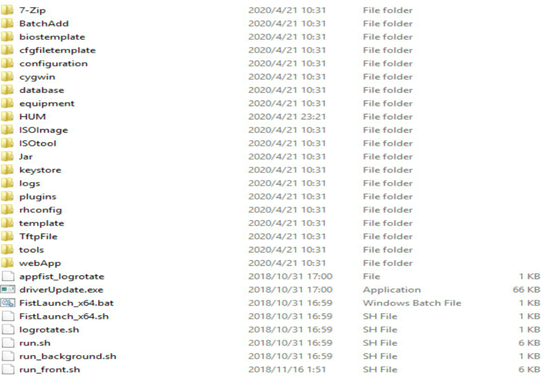
2. Right-click the FistLaunch_x64.bat file and select Run as administrator.
The FIST console opens a few seconds later.
|
IMPORTANT: If you use a non-administrator role to run FIST on a Windows system, the image files cannot be used. |
3. Verify the FIST settings.
¡ HTTP Port—HTTP service port number. The value range is 1 to 65535, and the default value is 80.
¡ HTTPS Port—HTTPS service port number. The value range is 1 to 65535, and the default value is 443.
¡ Session Timeout—Session timeout time in seconds. The value range is 600 to 1800, and the default value is 1800.
¡ Front Display—Whether or not to display the FIST console always in the foreground.
|
IMPORTANT: The HTTP and HTTPS service port numbers cannot be the same or be used by another service. If the port number is used by another service, change the port number. |
4. Click START.
5. Click Details to view the FIST startup progress and verify that it is started correctly.
Figure 11 Viewing FIST startup details
Installing FIST on a Linux system by using a .tar installation package
Restrictions and guidelines
· You must have root privileges to perform this task.
· You must run FIST as an administrator.
Installing and starting FIST on a GUI Linux system
1. Download the FIST installation package (AppFist-1.00.04.tar.gz in this example), and then save the package to its installation directory. This examples save the package to the root directory.
2. Open the terminal window.
3. Enter the tar -xf AppFist–1.00.04.tar.gz command, and then press Enter to decompress the installation package.
Figure 12 Decompressing the FIST installation package
4. Enter the cd AppFist/ command to access the AppFist folder.
Figure 13 Accessing the AppFist folder
5. Enter the bash FistLaunch_x64.sh command, and then press Enter to launch the FIST console window.
6. Verify the FIST settings:
¡ HTTP Port—HTTP service port number. The value range is 1 to 65535, and the default value is 80.
¡ HTTPS Port—HTTPS service port number. The value range is 1 to 65535, and the default value is 443.
¡ Session Timeout—Session timeout time in seconds. The value range is 600 to 1800, and the default value is 1800.
¡ Front Display—Whether or not to display the FIST console always in the foreground.
|
IMPORTANT: The HTTP and HTTPS service port numbers cannot be the same or be used by another service. If the port number is used by another service, change the port number. |
Figure 14 FIST console
7. Click START.
|
IMPORTANT: Keep the terminal window open while FIST is running. Closing the window will interrupt the FIST service. |
8. Click Details to view the FIST startup progress and verify that it is started correctly.
Figure 15 Viewing FIST startup details
Installing and starting FIST on a non-GUI Linux operating system
1. Download the FIST installation package (AppFist-1.00.04.tar.gz in this example), and then save the package to the root directory.
2. Enter the tar -xf AppFist–1.00.04.tar.gz command, and then press Enter to decompress the installation package.
Figure 16 Decompressing the FIST installation package
3. Enter the cd AppFist/ command to access the AppFist folder.
Figure 17 Accessing the AppFist folder
4. Execute the ./run.sh. command. At the Permission denied prompt, enter the chmod u+x run.sh command to add the execute permission for the file.
Figure 18 Adding the execute permission
5. Execute the ./run.sh 80 443 1800 command to start FIST.
The value 80 is the default HTTP port number and 443 is the default HTTPS port number. The port number is in the range of 1 to 65535. You can change the port number as needed.
The value 1800 is the default session timeout time. The session timeout time value is in the range of 600 to 1800, in seconds. You can change the value as needed.
Figure 19 Starting FIST
Installing and starting FIST by using an ISO image
Using a FIST ISO image file, you can install FIST automatically without manual intervention during the installation process.
The following procedure describes the procedure for using an ISO image to install and start FIST on an AE module.
To install and start FIST on an AE module by using an ISO image:
1. Launch the HDM KVM console of the AE module.
2. Select Media > Virtual Media Wizard from the top menu bar.
The Virtual Media window opens.
Figure 20 Virtual Media window
3. On the CD/DVD tab, click Browse to select an ISO image file, and then click Open.
4. Click Connect.
Figure 21 ISO image file mounted
5. Reboot the server. The server automatically enters the UEFI: AMI Virtual CDROM 1.00 boot option.
6. The system starts to install FIST. The process takes about 30 minutes and does not require manual intervention.
Figure 22 Installing FIST
7. After the installation is complete, FIST will automatically start to run.
Logging in to FIST
Restrictions and guidelines
· Only a user account in On state (activated) can be used to log in to FIST. Login to FIST with an inactivated account will be rejected.
· By default, a user will be logged out automatically after 30 minutes of inactivity.
Procedure
1. Enter the login address in the web browser.
You can log in to FIST from a FIST client or the FIST sever.
¡ To log in to FIST from a FIST client, enter http://FIST_ip_address in the address bar of the client browser.
FIST_ip_address represents the IP address of the FIST server. If FIST is installed on an AE module in slot E1, the IP address is 192.168.0.100/24. If FIST is installed on an AE module in slot E2, the IP address is 192.168.0.101/24. If FIST is installed on a VM, the IP address is 192.168.0.100/24.
¡ To log in to FIST from the FIST server, enter http://localhost or http://127.0.0.1 in the address bar of the host browser.
|
IMPORTANT: If the default port number is changed, use the modified port number when entering the login address. |
2. On the login page, enter the username and password, and then click Log In. The FIST home page opens
The default username is admin and password is Password@_.
Figure 23 FIST login page
Figure 24 FIST home page
|
|
NOTE: When FIST runs on an AE module, all its functions are available. When FIST runs on a non-AE module, only part of its functions are available. |
3. (Optional.) To modify the login password, select Menu > System > User List and then modify the password.
For more information about modifying the password, see FIST Online Help.
Using FIST
The FIST Web interface, as shown in Figure 25, opens upon your login. The FIST Web interface can be divided into two areas, as described in Table 5.
Table 5 FIST Web interface design description
|
Area |
Description |
|
Header section |
Provides function menus, login user information, and the following administrative options: · · · · |
|
Work pane |
Displays current operation information and function links. |
Configuring initial settings
After FIST is installed, configure initial settings to use the features of FIST as a best practice. The features in this chapter are optional and configure them as needed.
Configuring the network settings
This feature is available only when FIST runs on a VM or an AE module.
Setting the host name for FIST
Perform this task to view or set the host name used for the FIST server.
Procedure
1. In the navigation pane, select Menu > System > Network.
2. Enter the host name.
3. Click Save.
Figure 26 Setting the host name for FIST
Setting the IP address obtaining method for a network port
Perform this task to set the method used to obtain an IP address for a network port of the FIST server.
Procedure
1. In the navigation pane, select Menu > System > Network.
Figure 27 Viewing the network port information
2. To edit the IP address obtaining method of a
network port, click the ![]() icon for that network port. In the dialog box that opens, set the IP address
obtaining method and click OK.
icon for that network port. In the dialog box that opens, set the IP address
obtaining method and click OK.
Figure 28 Editing the IP address obtaining method
3. To add a new IP address to a network port, click Add New IP for that network port. Enter an IP address and subnet mask, and click OK.
Configuring DNS
About this feature
Perform this task to configure DNS servers. You can configure IPv4 and IPv6 DNS servers simultaneously. To access websites or servers on the Internet through domain names, you must configure DNS for address resolution. Access to Internet is required for some features of FIST. To use such features, configure DNS as required.
Procedure
1. In the navigation pane, select Menu > System > Network.
2. Click DNS.
3. In the dialog box that opens, configure DNS servers. First configure the primary DNS servers.
Figure 29 Configuring DNS
4. Click OK.
Configuring proxy
About this feature
Perform this task to configure a proxy server. Thus, FIST can use the HTTP or HTTPS protocol for external communication. A proxy server address can be an IPv4 address, IPv6 address, or domain address. To use domain addresses, first configure DNS. For more information, see "Configuring DNS."
Procedure
1. In the navigation pane, select Menu > System > Proxy Settings.
Figure 30 Configuring proxy settings
2. Select whether to enable proxy.
3. Enter the proxy server parameters.
4. (Optional.) Select HTTP to enable HTTP proxy.
5. (Optional.) Select HTTPS to enable HTTPS proxy.
6. Click Save.
Synchronizing the system time with an NTP server
This feature is available only when FIST runs on a VM or an AE module.
About this feature
Perform this task to synchronize the system time of FIST with an NTP server to ensure the time accuracy.
Procedure
1. In the navigation pane, select Menu > System > System Time Settings.
Figure 31 Configuring system time settings
2. Select Sync with NTP Server for the Select Mode field.
3. Click Auto Sync to enable auto synchronization.
4. Enter the IP address of the primary NTP server.
5. Enter the IP address of the secondary NTP server.
6. Click Save.
Configuring a cluster
This module is available only when FIST runs on AE modules.
About this feature
Perform this task to create or manage a cluster of AE modules to implement high availability. FIST automatically monitors the status of the primary node. When the primary node fails, FIST will switch to run on the secondary node, which avoids service interruption caused by the failure of the primary AE module.
Prerequisites
Cluster creation requires data synchronization. For correct data synchronization, make sure the time difference between the primary and secondary nodes is shorter than 10 seconds. For more information about how to set the system time, see "Synchronizing the system time with an NTP server."
If a cluster is created, make sure the following conditions are met:
· Make sure the primary and secondary nodes can reach each other. As a best practice, assign static IP addresses to ports for the primary and secondary nodes to communicate with each other and make sure the ports have the same subnet mask.
· Make sure the primary and secondary nodes each have a unique host name for FIST access. Do not set the host name to localhost or an all-digit string.
For more information about how to set the host name and the network settings, see "Configuring the network settings."
Restrictions and guidelines
· The secondary FIST node in the cluster will be stopped during cluster creation.
· During cluster creation, do not power off the AE modules or disconnect the network. Data synchronization will take a long time. Please wait till the whole progress finishes.
· During cluster creation, do not perform any other operations on FIST of the primary node.
· After the cluster is created, do not edit the host name, system time, or network settings of FIST.
· FIST cannot be reverted from cluster mode to standalone mode.
· Cluster creation failure will cause the unavailability of FIST. Please try again to create the cluster.
Procedure
1. In the navigation pane, select Menu > System > Cluster.
2. Click the Create Cluster link.
3. On the page that opens, configure the following parameters for the cluster to be created.
¡ Secondary Node Address—IP address used by the secondary node to communicate with the primary node. As a best practice, use the IP address of network port vmng.om or the 10-GE network port of the secondary AE module.
¡ FIST Virtual IP Address—Virtual IP address for users to access FIST after the cluster is created.
¡ iSCSI Virtual IP Address—IP address used to configure the iSCSI service. Make sure the entered iSCSI virtual IP address is on the same network segment as an IP address of the 10-GE network port on the primary AE module.
4. Click OK. You can see the progress of the creation from the progress bar. To view detailed information about the cluster creation, click View Log.
5. FIST will automatically restart after the cluster is successfully created. Log in to FIST by using the virtual IP address of FIST.
6. View information about the primary and secondary nodes on the Cluster page.
Figure 33 Viewing the cluster information
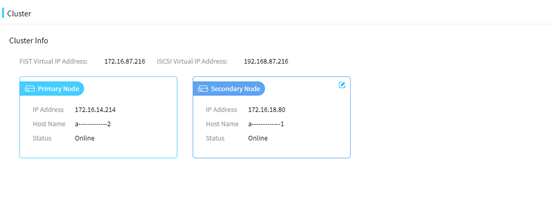
Configuring LDAP
About this feature
FIST can work with an LDAP server to provide quick access to LDAP users on the server.
You can add LDAP servers to FIST and then add LDAP user groups on the LDAP servers to FIST. Member users in the LDAP user groups can then log in to FIST directly with their credentials stored in the LDAP server.
Procedure
1. In the navigation pane, select Menu > System > LDAP Management.
2. Click Add LDAP Server.
3. In the Add LDAP Server dialog box that opens, configure the LDAP server parameters. For information about LDAP server parameters, see FIST Online Help.
Figure 34 Adding a LDAP server
4. Click OK.
Incorporating FIST to vCenter Server as a FIST plugin
About this feature
You can incorporate FIST as a plugin to vCenter Server. After that, you can access FIST through vSphere Client, an application that allows you to directly connect to a vCenter Server instance.
Prerequisites
Obtain the IP address, login username, and password of the vCenter Server.
Procedure
1. Enter https://FIST ip address:https port in the address bar to log in to FIST. Then, enter https://FIST ip address:https port/server/0/register-plugin in the address bar to access the Register Plugin page.
|
IMPORTANT: To ensure normal access to FIST after FIST plugin registration, log in to FIST through HTTPS. |
Figure 35 Accessing the Register Plugin page
2. Enter the IP address, username, and password of vCenter Server, and then click OK.
3. After the registration is complete, log in to vSphere Client. Click the FIST icon on the Shortcuts page to access FIST through vSphere Client.
Figure 36 Logging in to the vSphere Client interface
Uninstalling FIST
Uninstalling FIST installed by using a .tar installation package
Uninstalling FIST from a Windows operating system
1. Close the FIST console window.
2. Access the directory where the FIST installation folder resides and then delete the folder.
3. Access the directory where the FIST installation package resides and then delete the installation package.
Uninstalling FIST from a GUI Linux operating system
1. Close the FIST console window.
2. Open the terminal window.
3. Enter the rm -rf AppFist/ AppFist-1.00.04.tar.gz command and press Enter. Then delete the FIST installation package and FIST installation folder.
Figure 37 Deleting FIST installation folder and installation package
4. Enter ls to verify that the FIST installation package and FIST installation folder have been deleted.
Uninstalling FIST on a non-GUI Linux operating system
1. Enter the exit command and then press y to stop the FIST service.
Figure 38 Stopping the FIST service
2. Enter the rm -rf AppFist/ command and then press Enter to delete the FIST installation folder.
3. Enter the rm -rf AppFist-1.00.04.tar.gz command and then press Enter to delete the FIST installation package.
4. Enter the ls command to verify that the FIST installation package and FIST installation folder have been deleted.
Figure 39 Verifying the FIST uninstallation

